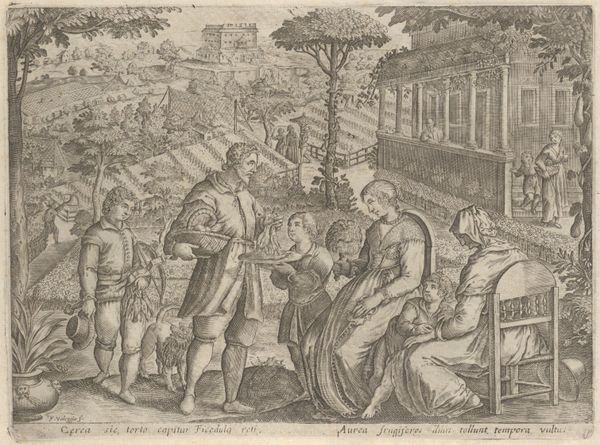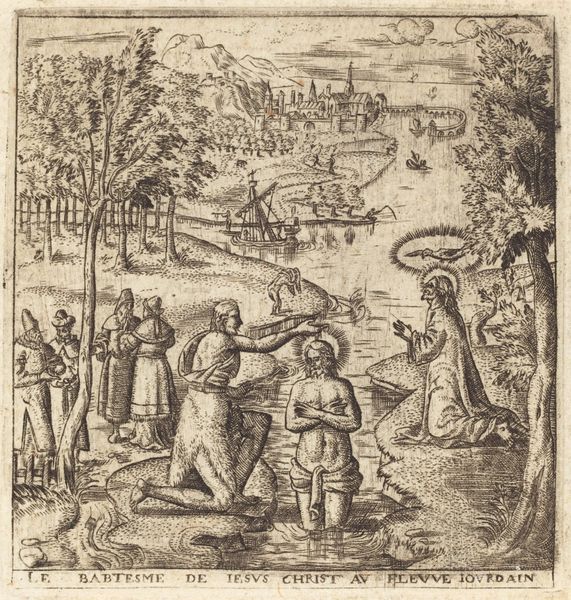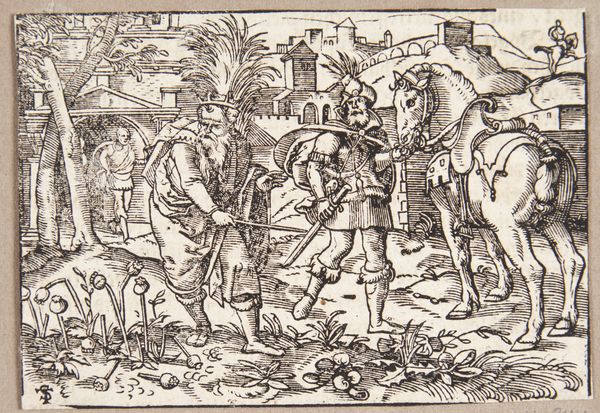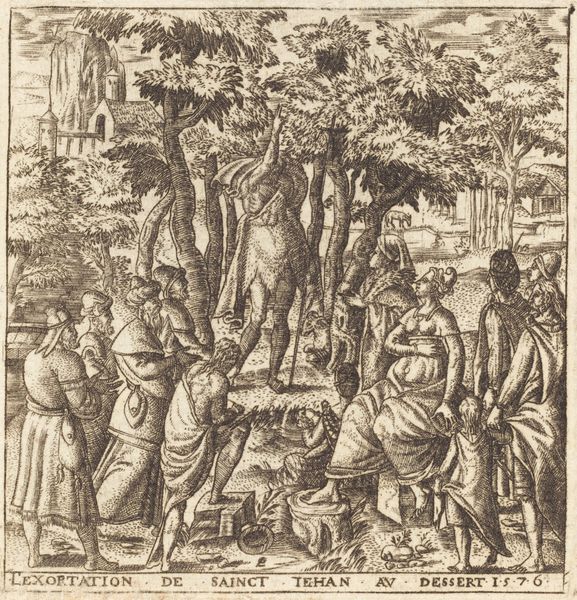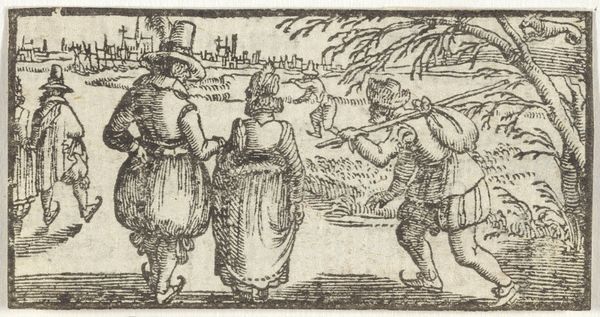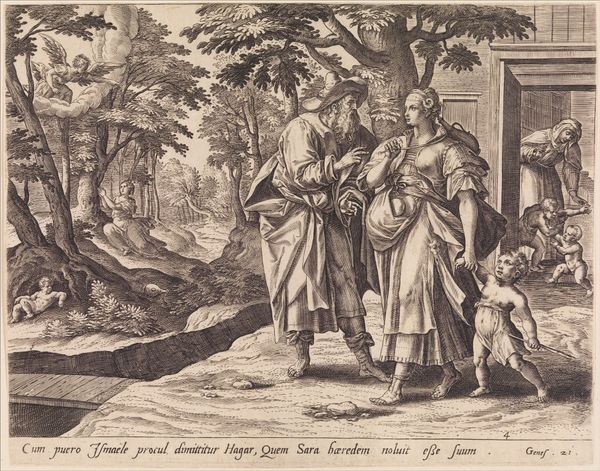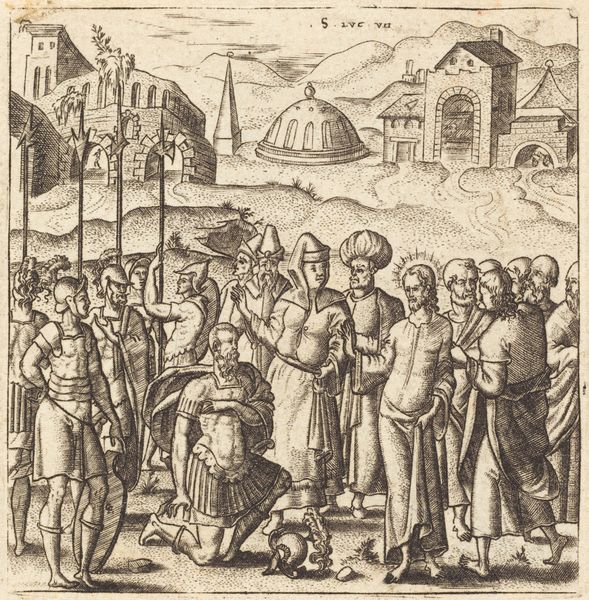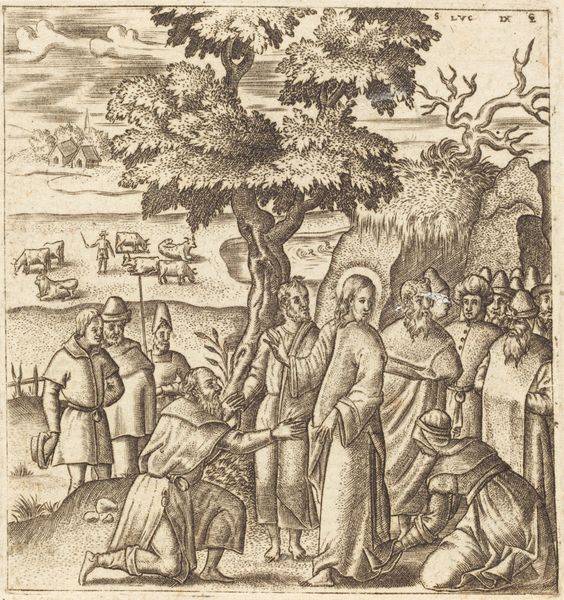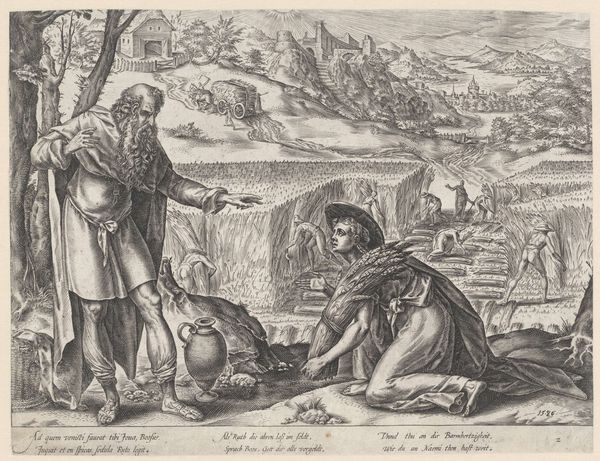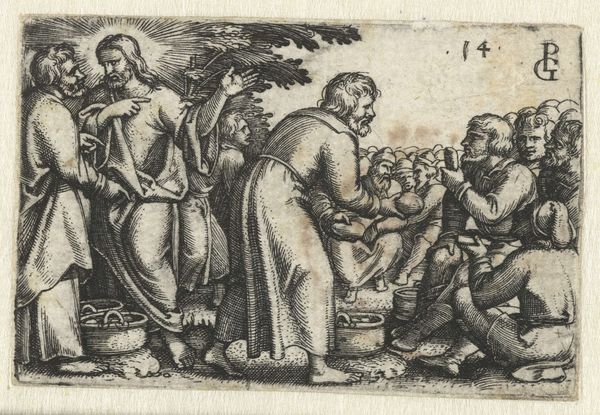
print, engraving
#
narrative-art
# print
#
figuration
#
history-painting
#
italian-renaissance
#
engraving
Dimensions: 2 5/16 × 3 7/8 in. (5.87 × 9.84 cm) (sheet)
Copyright: Public Domain
Curator: Look at this engraving by Sebald Beham titled "Departure of the Prodigal Son," created around 1540. It's currently housed at the Minneapolis Institute of Art. Editor: It feels almost theatrical. There's a real sense of dramatic departure rendered in such meticulous detail, although the overall atmosphere feels somewhat constrained by its black and white execution. Curator: The engraving technique lends itself to this fine detail you mention. Beham’s command of line is exquisite—note the texture of the fabrics, the way he uses hatching to create shadow and depth. It really enhances the dramatic tension. The narrative, drawn from the Bible, is elegantly compacted into a single frame. Editor: Indeed, but the historical context significantly influences how one might read this. The prodigal son isn’t just a story of individual redemption, is it? It’s about societal structures, class, the inherent privileges and limitations placed upon the individual depending on their standing within that structure. Even his clothing hints at a certain level of comfort that isn't necessarily available to everyone. The visual grammar speaks of power and dispossession. Curator: Certainly. However, focusing on the formal elements, notice the composition. The father and son form a central, almost symmetrical axis, while the receding landscape adds depth, emphasizing the son’s departure into the unknown. The light and dark contrast further amplifies the drama. There’s a powerful formal interplay at work independent of its social critique. Editor: I appreciate your observation about the father-son axis; nevertheless, for whom was this image made? Its display would have been extremely limited; this access restriction necessarily implies economic power on the parts of the few who could access it. Considering such circumstances transforms it, adding layers of social critique which cannot be ignored. Curator: I see what you mean. I came into this prepared to celebrate Beham's skill in deploying engravings to master form and biblical storytelling—you challenge me to ask harder questions. Editor: Precisely! To contemplate how the print functions within wider structures of meaning and accessibility. It shifts the conversation.
Comments
No comments
Be the first to comment and join the conversation on the ultimate creative platform.

